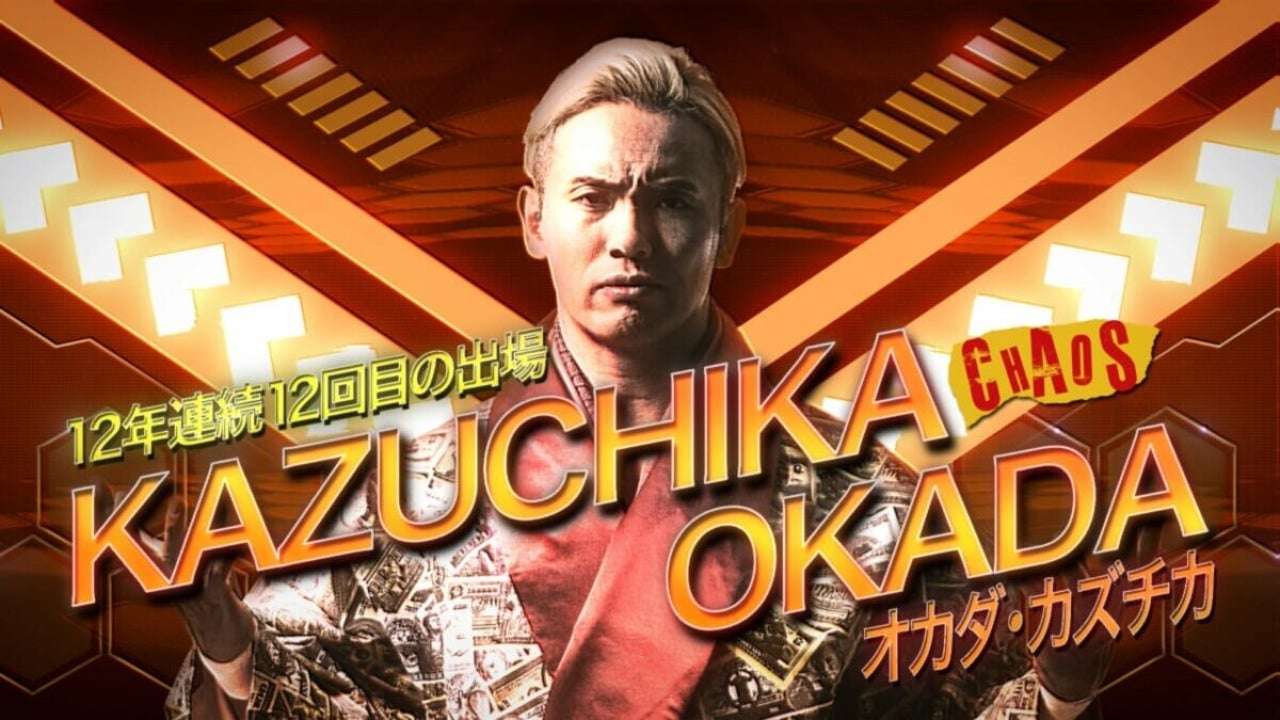News
Feasting on Glory: Unraveling the Cake-Filled Extravaganza of Japan’s Month-Long Wrestling Tournament
Durante los meses de julio y agosto se celebra el torneo de wrestling más importante en Japón y te contamos todo lo que necesitas saber para disfrutarlo

- July 16, 2023
- Updated: March 7, 2024 at 3:06 PM

For fans of puroresu, Japanese wrestling, summer is the happiest time of the year. With many major events happening during this period, it’s hard not to find at least one or two weekly shows that suit your tastes. But among these, there is one event that stands out among all. For its quality, consistency, length and longevity, it is one of the most celebrated and respected events in wrestling worldwide. We are talking about the G1 Climax.
What is G1 Climax?

The G1 Climax is an annual tournament that has been held since 1974 in New Japan Pro Wrestling (hereafter NJPW), Japan’s largest wrestling federation. It is considered the most prestigious tournament in the company, in all of Japan, and probably the world. The winner of the G1 Climax, also known as the Grade 1 Climax, becomes considered one of the company’s top wrestlers and, as such, becomes a priority to challenge the current holder of the IWGP Heavyweight Championship, NJPW’s highest award, equivalent to the title of World Champion or Heavyweight Champion of other federations.
What are its origins?

With half a century of history, it is logical that the G1 Climax has gone through different stages throughout its history. Created in 1974 under the name World League, it took its inspiration from another annual tournament, the World Big League, which was a very similar tournament created by the Japan Pro Wrestling Alliance and would be held from 1959 to 1972, following the federation’s closure in 1973. The name World League would remain until 1977, when it would change to MSG League, a name it would keep from 1978 until 1982, when it would change to IWGP League from 1983 to 1988. IWGP being the name of the governing body of NJPW, the International Wrestling Grand Prix.
This will only have two exceptions. In 1989 they would have a World Cup Tournament, where wrestlers from countries of the Soviet Union would participate, and in 1990 the tournament would not be held. In 1991 the tournament would have a rebranding, being renamed G1 Climax, changing its focus to, instead of giving prominence to the big superstars, use it to elevate its future stars, such as those known as the original Three Musketeers, Keiji Mutoh, Masahiro Chono and Shinya Hashimoto. Three wrestlers who have become wrestling legends, in part, thanks to G1 Climax.
What is its structure and how has it changed?

Although its structure has changed over time, generally the G1 Climax has consisted of a four-week tournament of between ten and sixteen people with a league system with two groups, where the top two from each group go through to decide the champion with single elimination bouts. With a maximum of thirty minutes per bout in the group stage, wins give 2 points, draws 1 point and losses none, which adds a strategic point to the whole. And while this has been the system that has been maintained for virtually the entire existence of the G1, with the exception of a few cases where they have been single elimination tournaments, but this has changed since last year’s edition.
Since G1 Climax 32, the 2022 edition, the tournament has become a four-block tournament to accommodate between 28 and 32 participants. Everything else remains the same, except that the bouts in the group stage will now last a maximum of twenty minutes. This should add dynamism to the tournament, as there are now many more participants.
What is the prize for winning it?

As a tournament that even in its current iteration is now in its thirty-third installment, it stands to reason that there have been changes in the implications of winning the tournament as well. While for decades winning the G1 Climax meant getting a chance to face off for the IWGP Heavyweight Championship, it wasn’t until 2012 until this prize was formally introduced. In the most curious way possible.
The winner of G1 Glimax 22, Kazuchika Okada, in addition to the honor of having beaten his opponents, got a briefcase containing a certificate allowing him to compete for the IWGP Heavyweight Championship during Wrestle Kingdom, the equivalent of WrestleMania for NJPW and held at the Tokyo Dome every January 4. But this had a bit of a twist. It meant that Okada also became a candidate for other wrestlers to challenge him for his certificate to fight the then champion, Hiroshi Tanahashi. A certificate he managed to successfully defend twice in October and November 2012.
In fact, there are two constants in the G1 Climax certificates. Virtually no one has ever lost them and virtually no one has ever successfully redeemed them. The only person to lose the certificate since it has existed was Kota Ibushi, on November 7, 2020, in a fight against Jay White that would lead to him having to defend, successfully, both the IWGP Heavyweight Championship and the IWGP International Championship against White at Wrestle Kingdom 15. Similarly, only two people have managed to successfully redeem their certificates. Hiroshi Tanahashi, who managed to defeat Kenny Omega at Wrestle Kingdom 13, and Kazuchika Okada, who defeated Shingo Takagi at Wrestle Kingdom 16 and Jay White at Wrestle Kingdom 17.
Who is fighting this year and who are the favorites?

This year, with 32 people entering the tournament, the stakes are particularly high. There are a lot of big names, there are some big favorites and some crazy balls that no one knows what to expect. That doesn’t detract from the fact that, from each block, there is a group of people to follow more closely, as they are the clear favorites to take home the prize.
Block A is the junior block and, ironically, the reigning heavyweight champion, Sanada. That makes Sanada one of the most obvious favorites, but there are three other favorites – the newly declared new Three Musketeers – Shota Umino, Yota Tsuji and Ren Narita. All three still have a lot to prove, but with the G1 Climax being the place for youngsters, this is certainly their chance. The B-block is the group where no one would want to find themselves. Kazuchika Okada is a four-time G1 winner, one of the most dominant champions in company history and one of the favorites to win it all. But in this block there is also Will Ospreay, the perennial favorite and the great western promise who comes from defeating Kenny Omega at Forbidden Door; an important detail, because Kenny Omega is the only westerner so far who has managed to be crowned G1 champion.
In Block C we have the veterans and hardest hitters in the world. It’s hard to pick favorites in this block, but Tomohiro Ishii is a beloved veteran and right hand man to Kazuchika Okada who has never given less than an absolutely excellent fight in the G-1 Climaxes, so hopefully this will be no exception. Meanwhile, Eddie Kingston has just been crowned Strong Openweight champion and is getting more attention at his parent company, AEW, so it’s important to keep an eye on him. The D block would be easily defined by calling it the favorites block. Hiroshi Tanahashi and Tetsuya Naito are among the favorites to take the tournament along with Kazuchika Okada, but to underdog the likes of Zack Sabre Jr, one of the best technicians in the world and who is having an absolutely excellent year as the first ever World Television champion, would be a grave mistake that no one should make.
When is it issued?

The G1 Climax 33 starts on July 15 and concludes on Sunday, August 13. There are events practically every day, with the exception of some particular dates. The only rest days are July 17, 20, 22, 24, 28, 29 and 31, as well as August 3, 4, 7 and 11.
How can I see it?

To watch G1 Climax, as well as all of NJPW in general, the best way is to subscribe to the njpwworld streaming service. With live broadcasts, delayed broadcasts, archive of its entire historical catalog, commentary in English and Japanese. The first two days, July 15 and 16, you can watch for free, and then you can watch everything for only 999 yen per month, something like 6.40 euros at the exchange rate. An excellent price to enjoy the best wrestling in the world in a tournament that promises to be magical.
Some of the links added in the article are part of affiliate campaigns and may represent benefits for Softonic.
Cultural journalist and writer with a special interest in audiovisuals and everything that can be played. I'm not here to talk about my books, but you can always ask me about them if you're curious.
Latest from Álvaro Arbonés
- Kojima's craziest game will have an anime very soon: this is what we know
- Lorcana focuses its new collection on the greatest villain in Disney history
- Steam has a festival of zombies and vampires and we offer you the best available deals
- The best live-action adaptation of an anime will receive a preview of its second season very soon
You may also like
 News
NewsJenna Fischer defends the later seasons of The Office
Read more
 News
NewsPark Sunghoo Unveils New Anime on Disney+
Read more
 News
NewsCan I use an eSIM and a physical SIM at the same time?
Read more
 News
NewsOne of the greatest science fiction hits of all time returns to theaters
Read more
 News
NewsVolkswagen’s ID.4 Becomes Best-Selling EV in America
Read more
 News
NewsHow to try Veo 3 to create videos with Gemini
Read more